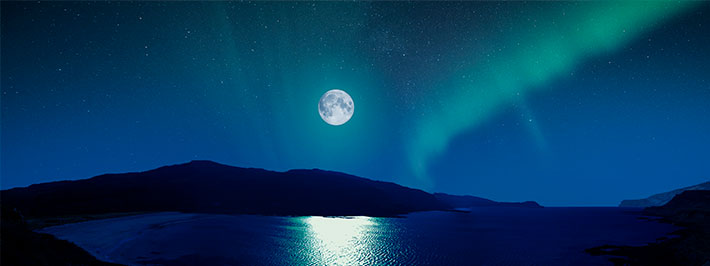
What would happen to us if the moon did not exist?
The moon is orbiting the earth 384,400 km away and despite its distance it has a profound impact on us. If the moon disappeared the night would be very dark and our world would visibly change.
Coral and certain species of crabs, worms, and fish can feel the moonlight in some of its phases. They use it as a trigger to start playback.
It would affect the tides. The gravitational force exerted by both the moon and the sun on the surface of the earth, act in conjunction with its rotation. The moon exerts an attractive force on the water, causing it to raise or lower its normal level. Two high and two low tides occur in a time of 24 hours, 50 minutes and 28 seconds.
When the Sun, Moon, and Earth are aligned, the Sun and Moon work together to produce "spring" tides (they don't have to happen in spring). During spring tides, high tides are slightly higher and low tides slightly lower than normal. Conversely, when the Sun and Moon are at right angles to each other, the tides of the Sun partially cancel out those of the Moon, and we have high tides that are slightly lower and low tides slightly higher than average. Without the Moon dominating, Earth's tides would be much simpler, but much weaker. The waves would be smaller than today.
Without the force of the Moon influencing the tides, animal life in the intertidal zone would have to adapt quickly. The intertidal zone is a concentrated band where certain species thrive between the ecological communities of the sea and the land. Weaker tides would cause this band to narrow, increasing competition and jeopardizing survival.
Sea turtles evolved to tune in to the tides, laying their eggs in the sand so that when they hatch they match the tides that will give their children the best chance of survival. This system would break without the influence of the Moon.
From a human point of view, weaker tides would make it difficult to fish for marine life that lives on or near the coast, as these marine animals move according to the movements of the tide.
The biggest impact would take time to manifest: destabilize Earth's rotation. Today, the Earth's axis is tilted 23.4 ° from our orbit around the Sun. But there is a slight wobble in this spin cycle. For Earth, it's a pretty slow wobble, taking around 26,000 years to complete the circle. It moves the Earth's axis just 2.4 degrees, but without the Moon to stabilize it, this wobble would become erratic and extreme.
If for some reason the Moon ceased to exist, it would mean extreme climate change. There would be great differences between temperatures and daylight throughout the year, glaciations would reach different parts of the world every few thousand years.